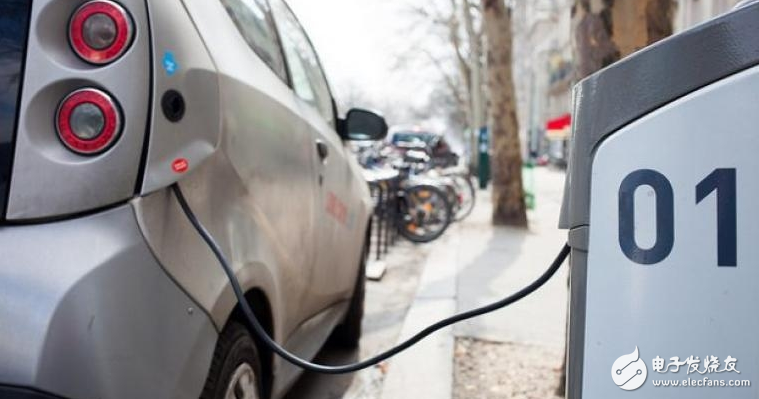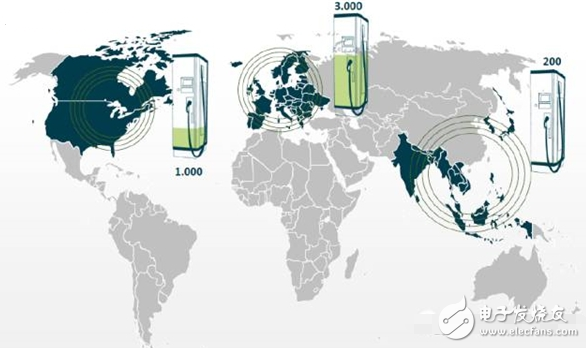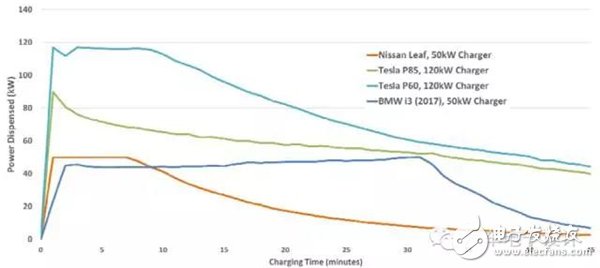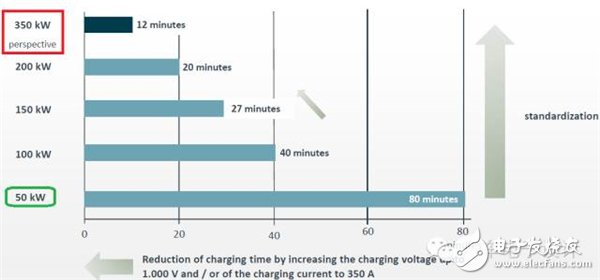Long battery life pure electric car wants to not rely on the battery? Talk about 350kW ultra-high speed charging technology
New energy vehicles want to go far, the capacity of the battery is the key, but the capacity is proportional to the weight and volume, and the greater the weight, the more power consumption. Then at this time, a super fast, high-power charger becomes necessary. (Porsche MissionE will be launched in 2019, 800V charging port can charge 80% of electricity in 15 minutes) Of course, Porsche is still in the concept, there is no charging pile in the world to meet its charging method.
Just recently, the Wall Street Journal reported that Daimler, BMW, Volkswagen Group and Ford have recently announced that they will jointly set up a joint venture to build a hundred A network of fast, high-power electric vehicle charging stations.
The above-mentioned automakers have signed a memorandum of understanding to start building charging stations next year. These charging stations charge electric vehicles much faster than the most powerful charging systems currently deployed. The joint venture's initial goal was to build about 400 charging stations with power ratings up to 350 kW.
In Europe, we have built a network of charging stations that provide ultra-high-speed charging for electric vehicles. The maximum power of charging piles is 350kW, which is equivalent to nearly three times that of Tesla Super Charging Station. It can greatly shorten the charging time. It is expected to start installation in 2017. The goal is to build 400 charging piles in Europe, with the ultimate goal of building up to “thousands†charging piles by 2020.

The four companies are scheduled to make large investments in the construction of ultra-fast charging networks and set up joint ventures to build infrastructure. These charging stations will comply with the charging interface standard of the Combined Charging System (CCS). Most of the current electric vehicles on the market use this charging specification. For other non-using CCS specifications, Japan is using the CHAdeMO charging specification. Large car dealers such as Nissan, Toyota and Honda. In addition, Tesla uses a self-designed charging standard, but sells the adapter for an additional $450, allowing the owner to recharge using the CHAdeMO-sized charging post. It has also been reported that Tesla is working Designed to provide an adapter for the owner to charge at the CCS charging station. In order to establish that any electric vehicle brand can easily use the charging pile, the four companies will also promote the participation of other auto manufacturers. This is to be done on the basis of the original CCS. CCS was mainly pushed in Europe before.

The key is to look at the 350KW charging, the previous charging curve to 350KW, you need to do (1000V, 350A).

This wave of 350kw network is mainly to prepare for the next wave of high-end 200-250 mile pure electric vehicles. High mileage means high power, and it needs more power to maintain the same speed.

At the end of 2015, Porsche wanted to pull the entire platform voltage up to 800V. Limiting the power boost is mainly from the original connector to the single unit. The fast charging characteristics of the whole battery also increase the heat dissipation requirement. After the overall voltage is put on the platform, the voltage of the whole system is increased. The current part is 225kw (800V, 280A).

Compared with Toyota in the inverter plus Boost, the entire voltage platform is upgraded, mainly to reduce weight and reduce the entire circulating current. One is the change brought by the car, the series of high-voltage busbar adjustment, the need to change all the pieces, which brings an opportunity for the introduction of power semiconductor chips, we understand the previous content, and compare Great changes, the insulation requirements of each component are much larger.

One is the change that comes with the car. One is from the 350kw charger, the plug needs to be cooled.

The change ontology is mainly realized by Boost DCDC.

From the perspective of the DC charging terminal, this pure electric vehicle (models from 2019 to 2020) is all high-end, the whole performance, and introduces a lot of new things. The upgrade of the entire CCS is also very fast. From the previous step to the next step, the change is real, and the core point is still implemented on the semiconductor material side.
Solar Energy System,High Quality Solar Energy System,Solar Energy System Details, CN
Wuxi Shengda Yukun Energy Development co.,Ltd , https://www.xlite-solarlight.com